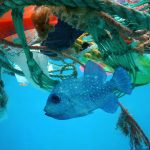The variety of new corals on Australia’s Great Barrier Reef has plunged by 89% since unprecedented bleaching in the years 2016 and 2017, according to the science research teams. The occasions, which has ruined two-thirds of the world’s most extensive reef system, at the moment are being blamed for triggering a collapse in coral re-development last year. The scientists blame the issue on rising sea temperatures.
The research, published in journal Nature on Thursday, was carried out by a gaggle of scientists last year. The research highlights the link between coral vulnerability and rising sea temperatures ensuing from sustained world warming and recommends elevated worldwide motion to cut back carbon emissions.
Coral bleaching is attributable to rising temperatures and happens when corals underneath stress drive out the algae - generally known as zooxanthellae - that give them color. If regular situations return, the corals can get well. However it might probably take many years, and if the stress continues, the corals can die.
Prof Baird mentioned the “fairly extraordinary” decline was surprising. It was more than likely the reef’s first re-development downside on a mass scale, he added. Nonetheless, the bleaching in 2016 and 2017 affected a 1,500km (900 miles) stretch of the reef. The examine additionally discovered that the combo of baby coral species had modified. It found a 93% drop in Acropora, a species which usually dominates a wholesome reef and gives habitats for 1000’s of different species.
The researchers stated coral replenishment might get well over the subsequent five to 10 years if there have been no future bleaching occasions. Nevertheless, given present estimates, this probability was “nearly inconceivable,” stated Prof Baird. The reef - an unlimited assortment of 1000’s of smaller coral reefs stretching from the northern tip of Queensland to the state’s southern metropolis of Bundaberg - was given World Heritage standing in 1981.
















